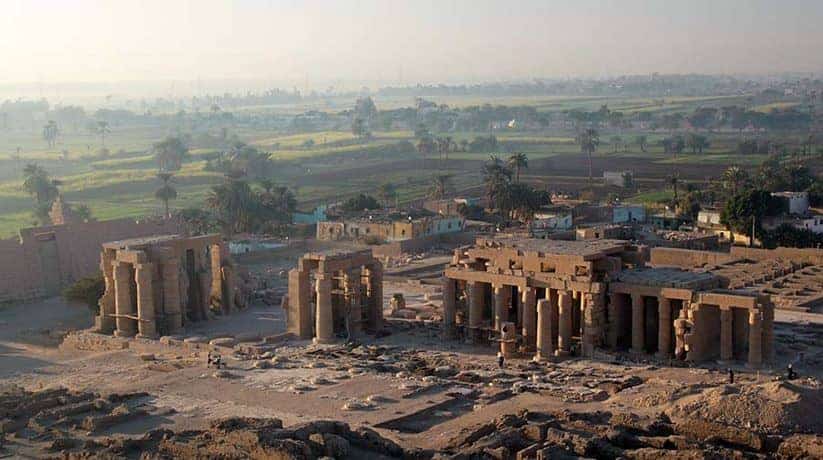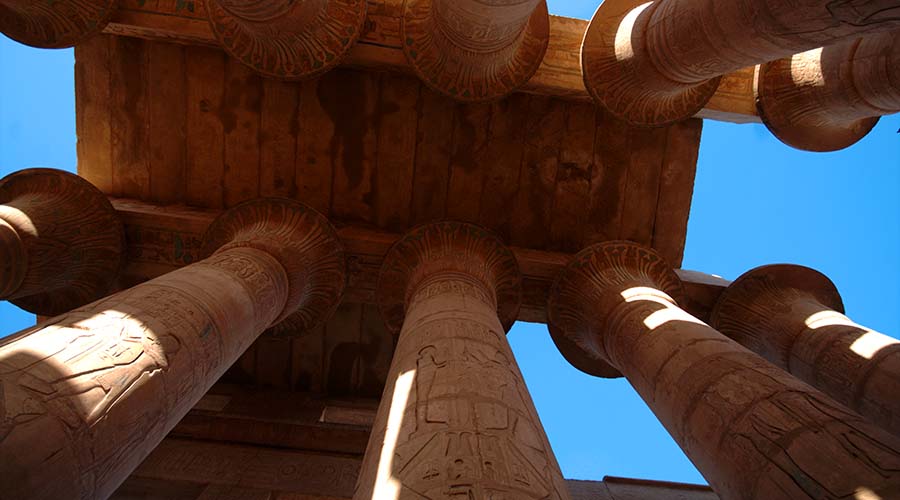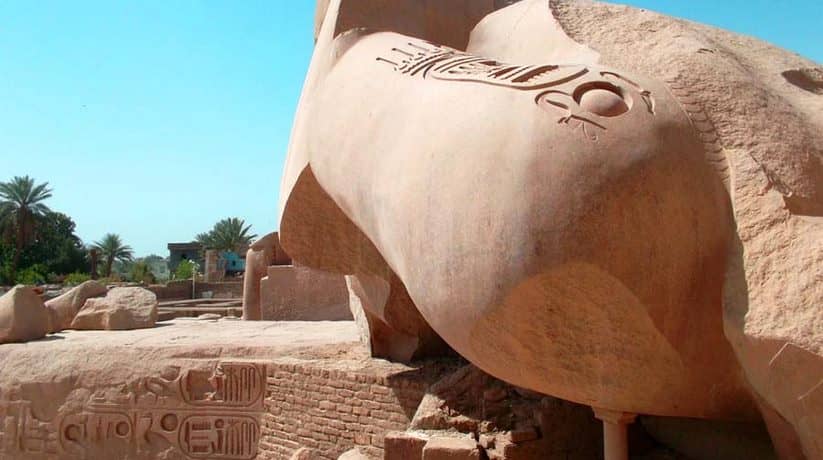Ramesseum Luxor Egypt information, tours, prices, booking
Ramesseum Luxor Egypt is a funerary temple of Ramses II 1279–13 BC. It erected on the west bank of the Nile River at Thebes in Upper Egypt. In fact, The temple is famous for its 17 meter seated statue of Ramses II. Moreover, it dedicated to the god Amon and the deceased king. The walls of the Ramesseum Luxor Egypt, only about half preserved. Furthermore, they decorated with reliefs including scenes depicting Kadesh Battle and the Festival of Min. Kadesh is the Syrian wars. In fact, the temple identified with the “Tomb of Ozymandias”.
Location of Ramesseum Luxor Egypt:
In fact, the site located in the Theban Necropolis. It is indeed a popular area for mortuary temples for Pharaohs in the New Kingdom. In fact, the Theban Necropolis located in Upper Egypt. Moreover, it stands across the Nile from the modern day city of Luxor. It dedicated to the memory of Ramses II and to the God Amon Ra.
Tomb of Ozymandias:
Over the years, Ramesseum Luxor Egypt referred to many names. They are “Tomb of Ozymandias” and “The Temple of Millions of Years United with Thebes”. They also include the name of “Memnonium”. Jean François Champollion was a French scholar. He was the first to identify the ruins as belonging to Ramses II. He coined the name, “The Ramesseum” back in 1829.
Ramesseum Luxor Egypt Design:
The site measures 600 feet (183 m) by 220 feet (67 m), which is unusually large. Today, the temple is in ruins. The visitors are still able to enjoy the hands of Ramses II Stature. In fact, the stature is 57 foot (17 m) high. It once stood in front of the very first pylon to the temple. It probably weighed at least 1,000 tons. At the base you read: “My name is Ozymandias, King of Kings: Look upon my works, ye Mighty, and despair”. The main entrance stood at the eastern situated pylon. It decorated with reliefs of scenes from the Battle of Kadesh, the Festival of Min and the Syrian Wars. On the right wing of the pylon are depictions of the cities that Ramses II conquered. It was during his popular reign.
It is besides to depictions of prisoners taken to the King. The left wing of the pylon reflects the famous battle between Ramses II and the Hittites. In the first courtyard, only one colonnade remains. Ramesseum Luxor Egypt houses a Hypo-style hall. It is a grand interior space where pillars and columns hold up the roof. Presently, 29 columns still stand in the Ramesseum Luxor’s Hypo-style hall. To allow in light, the middle columns are shorter than the outer edge columns. It also featured traceries windows. Depicted on the columns are extra scenes of the Battle of Kadesh. Two rows of Osiris columns represent Ramses II in the second courtyard. It is where the best preserved statues can found. This courtyard is in far better condition than the first.
Further details about Ramesseum Luxor Egypt:
Situated to the south of this second courtyard is a second but smaller Hypo-style hall. It at one time boasted eight papyrus bud columns. Also called the Astronomy Hall, the very first 12 month calendar illustrated here. On the western wall is a scene. It depicts Ramses II getting his name which recorded on the tree of life. It is by the God Thoth and the Goddess Seshat, to ensure a long, everlasting life. To the west lay two vestibules that are today in ruin. These vestibules lead to a library and a linen room and what was once a sanctuary dedicated to Amon Ra. It was here that Ramses II built a mud break palace where he stayed during visits to his mortuary temple.
Display of Great Wealth:
Ramesseum Luxor Egypt also contained the earliest arches in history. These arches were barrel shaped. They used for storing funerary materials and worker possessions. They were enormous storerooms of grain and corn. In ancient Egypt, grain considered like gold. A plenty of it stored in these granaries with arches. This grain shipped around the country. It also speculated that the larger temples like the Ramesseum Luxor Egypt had their own merchant ships outfitted with traders. These granaries served as lavish representations of the Pharaoh’s great wealth.

















